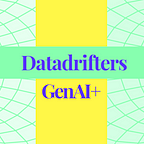ChatGPT vs LLaMa 2: Meta’s New Open-Source, Commercially Free Answer to Advanced AI
In an exciting new development, Meta has just released LLaMa 2 models, the latest iteration of their cutting-edge open-source Large Language Models (LLM).
Before we go through all of this awesomeness, please:
- Follow us on Medium to never miss a beat
- Get every new article straight into your personal data vault, hot and humming with the pulse of the matrix
- Get some freebies here!
Unveiling the Power of LLaMa 2
LLaMa 2 is much more than a simple upgrade. It’s a leap into the future of language models with features that would make any AI enthusiast’s heart race:
- Trained on 2 trillion tokens, a 40% increase in training data compared to LLaMa 1.
- Free for commercial use, making it an invaluable asset for businesses of all sizes.
- Includes chat models specifically designed for dialogue use cases.
- Default context window is 4096 and can be further increased for complex requirements.
- Models available in 7B, 13B & 70B parameters for various application needs.
- The 70B model adopts the advanced Grouped-Query Attention (GQA) for enhanced comprehension.
- Chat models are compatible with various tools and plugins.
- Achieves a performance on par with OpenAI’s ChatGPT.
- Now available on Hugging Face
Superior Performance and Innovation
LLaMa 2 doesn’t just improve on its predecessor — it takes performance to the next level. Fine-tuned models trained on over 1 million human annotations allow it to outshine other open-source language models in numerous external benchmarks. These include reasoning, coding, proficiency, and knowledge tests, marking a new era in AI performance.
Promoting a Responsible AI Ecosystem
To encourage responsible AI use, Meta is providing a comprehensive resource kit for LLaMa 2 users, from individual creators and developers to researchers, academics, and businesses. These resources ensure that everyone can fully utilize LLaMa 2’s capabilities in a responsible and effective manner.
Meta has created the Responsible Use Guide, which is an invaluable resource that provides best practices and considerations for developing products powered by LLMs. It covers every stage of the development process, ensuring that your AI application is built responsibly and performs optimally.
Enhanced Safety and Performance
The LLaMa-2-chat model has undergone rigorous testing by external partners and internal teams to identify and address performance gaps and mitigate potentially problematic responses. Meta is committed to an ongoing process of “red teaming” to continuously improve safety and performance.
Fostering Collaboration and Knowledge Sharing
Meta is also launching a program for academic researchers to foster collaboration and knowledge sharing in the field of artificial intelligence. By joining this community, participants can contribute to addressing key challenges in the field and develop innovative solutions for safe AI practices.
Interested researchers can submit an expression of interest, with a rolling acceptance process through September 10, 2023.
Open Source, Free for Research and Commercial Use
LLaMa 2 is not only open-source but also free for both research and commercial use. Meta aims to inspire a new wave of innovators to leverage LLaMa 2 to address crucial challenges, including environmental issues and education.
To support this, Meta is launching a challenge for public, non-profit, and for-profit entities to use LLaMa 2 in creative and impactful ways.
Creating a Community of Experts
Meta also created a forum to bring together experts from around the world to discuss AI, LLM, and other new technologies. This platform, created in consultation with Stanford Deliberative Democracy Lab and the Behavioural Insights Team, acts as a governance tool and resource for the community.
Ensuring Safety and Helpfulness
Finally, the LLaMa-2-chat model uses Reinforcement Learning from Human Feedback (RLHF) to enhance its safety and helpfulness. This includes rejection sampling and proximal policy optimization (PPO), making sure that the LLaMa-2-chat model is not just innovative but also safe and reliable.
To sum up, LLaMa 2 is here to revolutionize the way we perceive and use language models. It’s time to step into the future and unlock the endless potential of these advanced LLMs.
